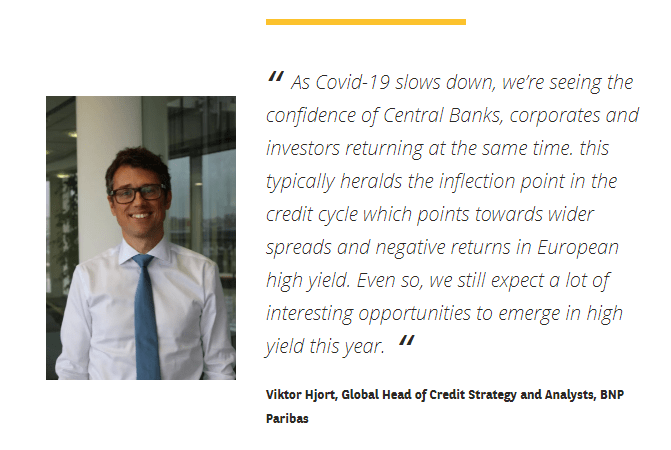Despite the economic challenges of the past two years, opportunities abound in high yield and leveraged finance particularly in ESG
High yield and leveraged loan markets in Europe had a record-breaking year in 2021 with issuance of €125bn and €129 bn respectively, according to S&P Leveraged Commentary and Data.
Despite concerns of inflationary pressures and the ongoing Covid-19 turbulence, issuers have not been deterred from pursuing and achieving their funding objectives, it was revealed at BNP Paribas’ 18th High Yield and Leveraged Finance Conference.
“Credit fundamentals remain positive,” said Fred Zorzi, Global Head of Primary Markets “and with a robust CLO market and sustained anticipated M&A activity, we expect there will once again be strong levels of issuance in 2022”.
During the two-day conference, delegates were invited to attend panel discussions providing expert analysis and outlooks on trending themes including private capital, the European CLO market and private equity.
Liquidity drain, credit pain
The market disturbances brought on by Covid-19 have been a major economic challenge over the past two years, and according to Viktor Hjort, BNP Paribas’ Global Head of Credit Strategy and Analysts, the pandemic has also dictated the pace of liquidity withdrawal by Central Banks and the bullishness of corporates and investors, creating a favourable environment for high yield markets.
But as the threat of Covid-19 eases, the credit market faces a simultaneous supply and demand shock which will drain liquidity from the credit market – though this would not lead to recession or economic crisis. Despite this, analysts found there was a compelling case for high yield markets to still outperform investment grade.

Impact of ESG on leveraged finance
In a panel session moderated by Constance Chalchat, Head of CIB Company Engagement & GM Chief Sustainability Officer, BNP Paribas, panellists outlined the opportunities ESG high yield and leveraged debt offered and how they saw the market developing.
The panel shared approaches towards futureproofing companies they invested in to help them become more sustainable in their practices, and to show that ESG impact is achievable alongside strong, recurrent performance.
They are adopting specific strategies for overcoming some of the challenges they had encountered. For smaller issuers, sustainability is a learning curve, as they are at a slight disadvantage to the bigger corporates who are used to working on ESG targets, and have large ESG teams working with readily available data.
But as one investor panelist noted, this presents an opportunity because it allowed them to become part of the sustainability journey of the company they were investing in.

This marked the second year that the conference was held virtually, and presented opportunities for 46 issuers to meet and interact with 500 investors, with 1,000 one-to-ones taking place, demonstrating keen engagement on both sides of the market.

